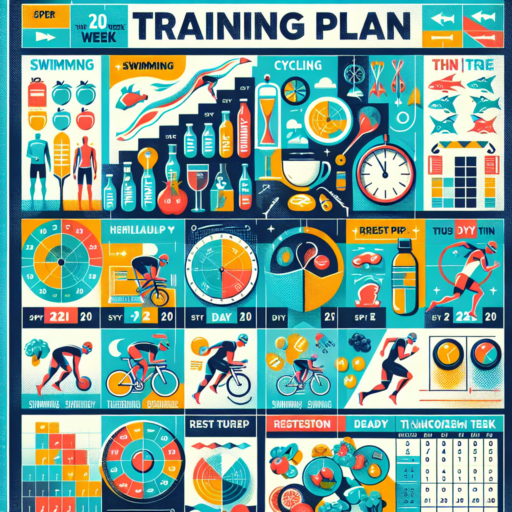Introduction to Heart Rate Variability (HRV) and Its Importance
Understanding the concept of Heart Rate Variability (HRV) is crucial for anyone interested in managing their stress levels, improving athletic performance, or simply maintaining a healthy lifestyle. HRV refers to the time variation between successive heartbeats, a factor that might seem trivial but holds profound insights into our overall health and wellbeing. This variability in heart rate is an indication of how well our parasympathetic and sympathetic nervous systems—the components that govern our body’s unconscious actions—are balanced.
While it is common to assume that a steady, unchanging heart rate is a sign of fitness, HRV tells a more detailed story. A higher HRV indicates a healthy, responsive cardiovascular system, whereas a lower HRV could suggest stress, fatigue, or even underlying health issues. Tracking HRV can provide invaluable feedback, empowering individuals to make informed decisions about their training schedules, rest periods, and stress management strategies.
The importance of HRV extends beyond the realm of physical fitness. It is a powerful tool for monitoring mental and emotional well-being. Studies have shown that HRV is closely linked to the body’s stress response system. By understanding and observing changes in HRV, people can gain insights into their stress levels and emotional states, offering a unique perspective on their mental health. With the advent of wearable technology, monitoring HRV has become more accessible, making it a key component of holistic health management.
Understanding the Basics: What is HRV?
Heart Rate Variability (HRV) is a measure that has been gaining ground in the wellness and health monitoring field. At its core, HRV refers to the variation in the time interval between consecutive heartbeats. Unlike the common perception that a steady, unchanging heartbeat is a sign of fitness, HRV presents a counter-narrative. It suggests that a higher variability in these heartbeat intervals is actually indicative of a healthy, responsive cardiovascular system.
HRV is an important marker for autonomic nervous system (ANS) functionality. The ANS regulates many of the body’s involuntary functions, including heart rate, digestion, and respiratory rate. When the body experiences stress, whether physical, mental, or emotional, the ANS responds by altering the heart rate. Thus, HRX reflects the balance—or imbalance—between the sympathetic (fight or flight) and parasympathetic (rest and digest) branches of the ANS. Essentially, a higher HRV suggests a more balanced, adaptable ANS, and by extension, a resilient body.
Tracking HRV has become increasingly popular among athletes, coaches, and everyday health enthusiasts seeking insights into recovery, stress levels, and overall cardiovascular health. With the advent of wearable technology, measuring HRV has never been easier, allowing for daily monitoring and analysis. This ease of access has opened up new possibilities for personalized health and fitness regimens, emphasizing the importance of listening to one’s body and understanding its signals.
Different Methods to Measure HRV at home
Measuring Heart Rate Variability (HRV) at home has become a popular approach for tracking one’s overall health, stress levels, and recovery status. With advancements in technology, numerous methods have made it easy for individuals to monitor their HRV without the need for professional medical equipment. Below, we delve into various techniques that cater to different preferences and budgets.
Wearable Technology
One of the most user-friendly methods to measure HRV at home is through wearable technology such as smartwatches and fitness trackers. Brands like Garmin, Apple, and Fitbit offer devices equipped with sensors designed to detect subtle variations in your heartbeat. These gadgets not only track your HRV but also provide insights into your sleep patterns, activity levels, and overall wellness. Wearable technology allows users to continuously monitor their HRV, making it easier to observe trends over time.
Smartphone Apps
Smartphone apps present another convenient option for measuring HRV. Many apps utilize the camera and flash on your phone to record your pulse when you place a finger over the camera lens. Applications such as Elite HRV and HRV4Training analyze these recordings to calculate your HRV, offering an easy and accessible way to gauge your body’s response to stress, exercise, and relaxation without the need for external hardware.
Chest Strap Monitors
For those seeking more accurate readings, chest strap monitors are an excellent choice. These devices closely monitor your heart’s electrical activity, providing precise HRV measurements. While initially popular among athletes for tracking performance, chest strap monitors have gained traction among health enthusiasts for their reliability and accuracy. By pairing with smartphones or watches, they enable real-time HRV tracking and detailed analysis of one’s physiological state.
How to Use a Chest Strap Monitor for Accurate HRV Measurement
Using a chest strap monitor for accurate Heart Rate Variability (HRV) measurement is a straightforward but precise science. The key to obtaining reliable HRV data lies in the correct placement and usage of the chest strap monitor. First, ensure that the monitor’s sensor pad is moistened to improve connectivity. This is crucial because the electrical signals that represent your heart’s activity are more easily detected through a wet interface.
Next, position the chest strap so that it sits just below the chest muscles. This location is optimal for capturing the electrical signals from your heart. It’s essential that the strap is snug but not too tight – think of it as like wearing a watch that should stay in place but not cause discomfort. For the best results, align the monitor’s sensor directly over your heart to ensure the most accurate HRV readings.
Finally, regularly check the fit and condition of your chest strap monitor. Wear and tear on the device can lead to inaccuracies in HRV measurements. Look for signs of stretching in the strap, which can reduce the effectiveness of the sensor’s contact with your skin. Replacing the strap or the entire unit when necessary can help maintain the accuracy of your HRV monitoring over time.
Utilizing Smartphone Apps and Wearable Devices for HRV
In the fast-paced world of health and wellness technology, the focus on monitoring our body’s signals has become increasingly prevalent. Among these, Heart Rate Variability (HRV) stands out as a valuable metric for understanding our physical and mental condition. As HRV gains traction among fitness enthusiasts, professionals, and health-conscious individuals, the role of smartphone apps and wearable devices becomes pivotal. These tools make it easier than ever to track and analyze HRV, providing insights that can lead to improved well-being, performance enhancement, and stress management.
Smartphone apps dedicated to HRV monitoring offer a user-friendly interface for daily tracking. By either utilizing the phone’s built-in sensors or connecting to an external heart rate monitor, users can receive instant feedback on their HRV scores. The apps not only display real-time data but also compile long-term trends and patterns. This is invaluable for identifying how various aspects of lifestyle—such as sleep, exercise, and diet—impact HRV and overall health. Moreover, many of these applications incorporate guidance and personalized recommendations to help users optimize their well-being based on their HRV data.
Meanwhile, wearable devices, such as smartwatches and fitness bands, provide a continuous, hands-free approach to HRV monitoring. These devices constantly collect data, allowing for a more comprehensive view of one’s HRV over time. Wearables with HRV features are not only beneficial for athletes aiming to optimize performance and recovery but also for anyone interested in stress management and mental health. The seamless integration of these devices with smartphone applications further enhances the utility and accessibility of HRV data, making it simpler for users to track and interpret their physiological state on the go.
Step-by-Step Guide to Measuring Your HRV at Home
Measuring Heart Rate Variability (HRV) at home has become an invaluable method for assessing one’s health and fitness levels. This guide will provide you with a straightforward process to accurately gauge your HRV, enabling you to make informed decisions about your well-being. With the right tools and understanding, you can turn this complex measurement into actionable health insights.
Choosing the Right Equipment
First and foremost, selecting the appropriate device is crucial for measuring your HRV accurately. Options range from dedicated HRV monitors to smartwatches and chest straps. Ensure that whatever device you opt for, it specifically mentions HRV measurement capabilities. While most recent fitness gadgets include this feature, it’s essential to verify their precision and reliability in providing HRV data.
The Measurement Process
- Prepare: Begin by finding a quiet and comfortable place where you can relax without interruptions. This ensures your readings are not affected by temporary stress or physical activity.
- Position: Sit or lie down in a steady position. It’s critical to maintain the same posture each time you take your measurement for consistency.
- Timing: Consistency in timing is also key. Measuring your HRV at the same time each day, preferably in the morning, provides more comparable results.
- Recording: Follow the instructions provided with your chosen device to start measuring. Most devices will require a few minutes to record your HRV accurately.
Understanding the nuances in HRV readings can help guide your training, recovery, and lifestyle choices. It’s an excellent tool for fine-tuning your approach to health and fitness, tailoring adjustments to suit your body’s needs.
Interpreting Your HRV Data: What Does It Mean for Your Health?
Understanding your Heart Rate Variability (HRV) data can uncover valuable insights into your overall health and well-being. HRV measures the variation in time between each heartbeat, which is directly linked to your autonomic nervous system’s (ANS) performance. This system regulates critical functions including heart rate, blood pressure, breathing, and digestion. A higher HRV indicates a healthy, responsive ANS and is often associated with better cardiovascular fitness, higher resilience to stress, and a stronger recovery capacity.
When you start to dive into your HRV data, it’s crucial to consider the factors that may influence your scores. Things like physical activity, stress levels, sleep quality, and even your hydration status can affect your HRV. For instance, consistent high-intensity training without adequate recovery can lead to a decreased HRV, signaling potential overtraining or heightened stress. Conversely, engagement in stress-reduction practices such as mindfulness or yoga can yield an improved HRV over time.
To accurately interpret your HRV data, it’s recommended to track it consistently over time rather than focusing on isolated readings. This longitudinal approach allows you to identify your baseline HRV and observe changes as they relate to lifestyle adjustments, stress management, and physical training regimens. By monitoring trends within your HRV data, you can make informed decisions about how to optimize your health, pinpoint potential health issues before they become serious, and tailor your recovery practices to support your ANS effectively.
Tips for Improving Your HRV Scores Through Lifestyle Changes
Heart Rate Variability (HRV) is a critical indicator of the autonomic nervous system functioning and overall heart health. Understanding how to enhance HRV scores through lifestyle changes can lead to improved well-being and a reduction in stress levels. Here, we explore practical steps you can take to positively influence your HRV scores, emphasizing the importance of consistency and mindfulness in incorporating these changes into your daily life.
Maintain Regular Physical Activity
Engaging in regular, moderate exercise is one of the most beneficial methods to boost your HRV. Activities such as brisk walking, cycling, or swimming can enhance cardiovascular health and increase HRV scores over time. Importantly, it’s essential to find a balance, as excessive high-intensity workouts could lead to overtraining and reduce HRV levels.
Optimize Your Sleep Patterns
Quality sleep is foundational for improving HRV scores. Establishing a regular sleep routine that includes 7-9 hours of restful sleep not only enhances your HRV but also aids in recovery and stress reduction. Consider implementing practices such as reducing blue light exposure before bedtime and maintaining a cool, dark, and quiet bedroom environment to promote deeper sleep cycles.
Practice Stress-Reduction Techniques
Stress significantly impacts HRV scores, making stress management crucial for overall heart health. Techniques such as mindfulness meditation, deep breathing exercises, and yoga have been shown to effectively lower stress levels and improve HRV. Incorporating these practices into your daily routine can help in creating a more resilient and responsive autonomic nervous system.
No se han encontrado productos.
FAQs: Common Questions About Measuring HRV at Home
Certainly, focusing on the subject at hand allows us to delve directly into the core inquiries many individuals have when it comes to home-based HRV (Heart Rate Variability) measurements.
What Equipment Do I Need to Accurately Measure HRV at Home?
To accurately measure HRV at home, the most essential piece of equipment you need is a reliable HRV monitor. This could be a dedicated HRV monitoring device or a high-quality wearable fitness tracker that includes HRV measurement capabilities. It’s important to choose devices that offer precise readings and have a proven track record of accuracy. Additionally, ensuring that your monitoring device is compatible with any apps or software for reading and interpreting HRV data is crucial for a comprehensive understanding of your results.
How Often Should I Measure My HRV to Get Meaningful Data?
Consistency is key when it comes to measuring HRV. For meaningful data, it is recommended to measure your HRV daily, preferably at the same time under similar conditions to ensure consistency. This could be first thing in the morning before getting out of bed, as it provides a clear, consistent baseline to track changes over time. Frequent measurements allow for more accurate trends to be identified, offering greater insights into your heart’s health and your body’s resilience to stress.
Can I Use HRV Measurements to Improve My Fitness Level?
Absolutely. HRV measurements can be a powerful tool for tailoring your fitness routine. High HRV levels are indicative of a healthy, resilient heart, while lower levels may suggest overtraining, stress, or potential health issues. By monitoring your HRV, you can adjust your training intensity, recovery periods, and lifestyle choices to optimize your overall fitness and well-being. It’s a dynamic indicator that can guide you in making informed decisions about your exercise routines and recovery strategies.
In understanding and applying the information garnered from these common questions, individuals can embark on a more informed journey towards optimizing their heart health and overall fitness levels through effective home measurement of HRV.
Conclusion: The Benefits of Regular HRV Monitoring
In understanding the immense value that regular HRV (Heart Rate Variability) monitoring brings to the table, it’s critical to recognize its role as a comprehensive window into our autonomic nervous system. By keeping a consistent check on HRV, individuals gain unparalleled insights into their stress levels, recovery status, and overall heart health. This form of monitoring serves as a preemptive measure, enabling timely adjustments in lifestyle, diet, and exercise regimes.
Moreover, regular HRV tracking fosters improved decision-making when it comes to managing daily stressors and physical exertion. It becomes a potent tool in personalizing health strategies, ensuring that activities and practices are aligned with one’s unique physiological needs. The clarity offered by ongoing assessments allows for a more nuanced understanding of what factors contribute to fluctuations in HRV, empowering individuals with the knowledge to augment their wellbeing effectively.
Lastly, through the routine analysis of HRV patterns, people can detect potential health issues before they escalate into more severe problems. It’s a proactive approach to health maintenance, emphasizing prevention over treatment. As we navigate a world where stress has become ubiquitous, the importance of such practices cannot be overstated. In essence, the benefits of regular HRV monitoring lay the groundwork for a healthier, more balanced lifestyle, driven by informed and personalized health decisions.




